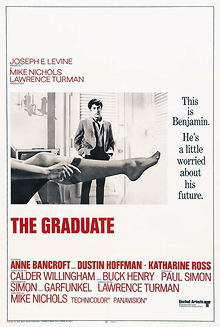Strangely, this altogether mercenary system provides unexpected support for auteur theory. Italian directors may have been hard-working, extraordinarily skilled craftsmen rather than soulful romantic artists, but their films tend to brim with a fierce individualism that was encouraged by the heightened, nonrealistic styles developed in the giallo and western genres.
Sergio Corbucci, I'm starting to realise, was very much an auteur. We last encountered him in 1966, riding high on the success of Django. The following two years are as clear a lesson as anyone could want on the nature of the Italian film industry, for during that time Corbucci directed no fewer than six films - four westerns (Johnny Oro, Navajo Joe, Hellbenders and A Professional Gun), a thriller (Death on the Run) and a musical comedy (Zum zum zum).
The next Corbucci classic, 1968's The Great Silence (Il grande silenzio), is infamous for an ending so bleak that Corbucci had to shoot an alternate version for several markets. I haven't seen the sanitised cut, but it must be as jarring tonally as the actual ending is morally. The Great Silence, you see, is dark and nihilistic to an extent previously unseen in the genre. Corbucci takes all the meaner elements of the spaghetti western and exaggerates them into something resembling grotesque. Parody isn't the right word, though. The film feels too serious for that.
During the great blizzard of 1899, a community of religious dissenters is being hunted down by bounty hunters in the wilderness of the Utah mountains. (The time and place imply they're Mormon fundamentalists, but I don't believe they're ever named as such.) But the hired killers don't stop at outlaws. When her husband is shot dead by Loco (Klaus Kinski), Pauline (Vonetta McGee) hires a gunslinger nicknamed Silence (Jean-Louis Trintignant), mute since bounty hunters shot his family and cut his throat to keep him quiet, to exact revenge.
Meanwhile, Sheriff Burnett (Frank Wolff) is sent by the governor to restore order and end the violence by granting a general amnesty. After his horse is eaten by the outlaws, he barely survives to make it to his destination. He's horrified by the conditions there: Loco lugs frozen corpses around to prove his kills, while local justice of the peace and general store owner Pollicutt (Luigi Pistilli) is openly siding with the bounty hunters and making advances on Pauline.
Django was named for the famous jazz guitarist's paralysed fingers. The character of Silence is another of the director's off-colour jokes, as the taciturn nature of the spaghetti western is exaggerated into literal muteness. But here it actually harms the film. The character concept is interesting, but Trintignant just isn't a good enough physical actor to make it work. Instead, his unforgivably bland hero is constantly outshone by everyone around him.
To be fair, Corbucci seems to have realised this. I couldn't swear to it, but it certainly feels as if Kinski's Loco gets more screentime than Silence, and rightly so. In a black fur coat he resembles a vulture, brutal and amused by the scruples of lesser mortals but not apparently cruel. He carefully notes his kills in a ledger and stresses the lawfulness of his profession, insisting that 'it's our bread and butter'. He's level-headed enough not to let Silence provoke him into a gunfight he knows he would lose. Even his racism ('What times we live in - blacks worth as much as a white man', he laments after shooting Pauline's husband) is more lip-service to his white privilege than the fierce bigotry one would expect of an antagonist.
He's the Old West villain as murderous accountant, a savage indictment of the legally sanctioned violence of capitalism. I can't prove it, but I suspect there's a hint of the 'banality' of bureaucratised mass murder that Hannah Arendt's writings on Eichmann had highlighted earlier in the decade. If so, it might be part of the reason Kinski's lines were not overdubbed by a native English speaker. That, and the fact he's Klaus Kinski. It's a formidable performance, physically relatively restrained but no less mesmerising for it.
The rest of the cast range from the fantastic (Luigi Pistilli's literal murderous accountant) to the good (Frank Wolff's overmatched lawman). Vonetta McGee's performance is not much more than serviceable and her character arc hardly makes much sense, but she is helped by being gorgeous & awesome, if I may abandon my critical detachment for a second. And she gets a rare 'let's run away together, abandoning the bus full of orphans to certain doom!' speech that is actually vindicated by subsequent events.
Frequent handheld close-ups and a focus on squalor even more intense than seen in Django result in a rougher, less stately look than the earlier film. The production design, though, is at least as good. Silence's Mauser C96 semi-automatic pistol is one hell of a cool gun (much is made of the historically accurate use of the stock as a holster). And the wintry vistas of the Italian alps give The Great Silence a natural grandeur Django lacks, although those who've been to the Dolomites and recognise the mountains are in for a pretty severe alienation effect. Last but not least Ennio Morricone turns in another terrific score - though where his work for Leone tends to come out blasting, here the music begins subtly and builds over the film, for a suitably dramatic showdown. It's a great film: nasty, cold and hopeless, to be sure, but great nonetheless.









